Tripartite Evolutionary Game and Simulation Analysis of Healthcare Fraud Supervision under the Government Reward and Punishment Mechanism
Abstract
1. Introduction
2. Literature Review
2.1. Supervision of Healthcare Funds
2.1.1. Research on the Supervision Subject
2.1.2. Research on the Supervision Method
2.1.3. Research on the Supervision Legalization
2.1.4. Research on the Reason of Healthcare Fraud
2.2. Evolutionary Game Model
3. Model Assumptions and Construction
4. Evolutionary Game Analysis
4.1. Hospital Evolution Stability Strategy
4.2. Third Party Evolution Stability Strategy
4.3. Government Evolution Stability Strategy
4.4. Stability Analysis of Equilibrium Point of Tripartite Evolutionary Game System
5. Numerical Simulation Analysis
5.1. The Numerical Simulation Results under Scenario 1
5.2. The Numerical Simulation Results under Scenario 2
5.3. The Numerical Simulation Results under Scenario 3
6. Conclusions
7. Implications
8. Limitations
Author Contributions
Funding
Institutional Review Board Statement
Informed Consent Statement
Data Availability Statement
Acknowledgments
Conflicts of Interest
References
- NHCAA. A Private-Public Partnership Against Health Care Fraud. 2009. Available online: http://www.nhcaa.org/eweb/DynamicPage.aspx?webcode=anti_fraud_resource_centr&wpscode=ConsumerAndActionInfo (accessed on 20 January 2023).
- Palutturi, S.; Makkurade, S.; Ahri, R.; Putri, A. Potential for fraud of health service claims to BPJS health at Tenriawaru public hospital, bone regency, Indonesia. Int. J. Innov. Creat. Chang. 2019, 8, 70–90. [Google Scholar]
- Santoso, B.; Hendrartini, J.; Rianto, B.U.D.; Trisnantoro, L. System for detection of national healthcare insurance fraud based on computer application. Public Health Indones. 2018, 4, 46–56. [Google Scholar] [CrossRef]
- Settipalli, L.; Gangadharan, G. Healthcare fraud detection using primitive sub peer group analysis. Concurr. Comput. Pract. Exp. 2021, 33, e6275. [Google Scholar] [CrossRef]
- Stowell, N.F.; Schmidt, M.; Wadlinger, N. Healthcare fraud under the microscope: Improving its prevention. J. Financ. Crime 2018, 25, 1039–1061. [Google Scholar] [CrossRef]
- Ogunbanjo, G.A.; van Bogaert, D.K. Ethics in health care: Healthcare fraud. S. Afr. Fam. Pract. 2014, 56, S10–S13. [Google Scholar]
- Li, J.; Huang, K.Y.; Jin, J.; Shi, J. A survey on statistical methods for health care fraud detection. Health Care Manag. Sci. 2008, 11, 275–287. [Google Scholar] [CrossRef]
- Sukma, D.P.; Sulistiyono, A.; Novianto, W.T. Fraud in Healthcare Service. In Proceedings of the 1st International Conference on Law, Governance and Social Justice (ICoL GaS 2018), Purwokerto, Indonesia, 25–26 September 2018; p. 03015. [Google Scholar]
- Syafrawati, S.; Machmud, R.; Aljunid, S.M.; Semiarty, R. Incidence and root cause of upcoding in the implementation of social health insurance in rural province hospital in Indonesia. Asia Pac. Fraud J. 2020, 5, 56–61. [Google Scholar] [CrossRef]
- Holmberg, S.; Rothstein, B. Dying of corruption. Health Econ. Policy Law 2011, 6, 529–547. [Google Scholar] [CrossRef]
- Stowell, N.F.; Pacini, C.; Wadlinger, N.; Crain, J.M.; Schmidt, M. Investigating Healthcare Fraud: Its Scope, Applicable Laws, and Regulations. William Mary Bus. Law Rev. 2020, 11, 479. [Google Scholar]
- Rashidian, A.; Joudaki, H.; Vian, T. No evidence of the effect of the interventions to combat health care fraud and abuse: A systematic review of literature. PLoS ONE 2012, 7, e41988. [Google Scholar] [CrossRef]
- Maarse, H.; Paulus, A.; Kuiper, G. Supervision in social health insurance: A four country study. Health Policy 2005, 71, 333–346. [Google Scholar] [CrossRef] [PubMed]
- Wang, X.; Mou, T. How Public-private Sector Cooperation Create Public Value Possible: A Case Study Based on the Healthcare Security Fund Supervision Innovation in Z City. Nanjing J. Soc. Sci. 2022, 10, 63–72+117. [Google Scholar] [CrossRef]
- Yu, H.; Shen, L.; Shao, H.; Jiaxing Medical Security Bureau. Practice and Thinking of Establishing Standardized Third Party Supervision in Jiaxing. China Health Insur. 2021, 6, 59–62. [Google Scholar] [CrossRef]
- Thornton, D.; Mueller, R.M.; Schoutsen, P.; Van Hillegersberg, J. Predicting healthcare fraud in medicaid: A multidimensional data model and analysis techniques for fraud detection. Procedia Technol. 2013, 9, 1252–1264. [Google Scholar] [CrossRef]
- Simborg, D.W. Healthcare fraud: Whose problem is it anyway? J. Am. Med. Inform. Assoc. 2008, 15, 278–280. [Google Scholar] [CrossRef]
- International Network of Pensions Regulators. Regulating Private Pension Schemes: Trends and Challenges; OECD Publishing: Washington, DC, USA, 2002. [Google Scholar]
- Turner, J.A.; Somavia, J. Social Security Pensions: Development and Reform; International Labour Organisation: Geneva, Switzerland, 2000. [Google Scholar]
- Oyegoke, T.; Ikono, R.; Soriyan, H. An integrated health management system for national health insurance scheme in Nigeria. J. Emerg. Trends Comput. Inf. Sci. 2017, 8, 30–40. [Google Scholar]
- Alimi, M.; Binuyo, O.G.; Gambo, I. Realtime National Health Insurance Scheme (RNHIS): Means To Achieve Health for All. SSRN Electron. J. 2021. [Google Scholar] [CrossRef]
- Sheehan, J.G.; Goldner, J.A. Beyond the anti-kickback statute: New entities, new theories in healthcare fraud prosecutions. J. Health Law 2007, 40, 167–203. [Google Scholar]
- Bloom, G.; Standing, H.; Lloyd, R. Markets, information asymmetry and health care: Towards new social contracts. Soc. Sci. Med. 2008, 66, 2076–2087. [Google Scholar] [CrossRef]
- Shmanske, S. Information asymmetries in health services: The market can cope. Indep. Rev. 1996, 1, 191–200. [Google Scholar]
- Arthur, W.B. Complexity in economic and financial markets. Complexity 1995, 1, 20–25. [Google Scholar] [CrossRef]
- Ginter, P.M.; Duncan, W.J.; Swayne, L.E. The Strategic Management of Health Care Organizations; John Wiley & Sons: Hoboken, NJ, USA, 2018. [Google Scholar]
- Waghade, S.S.; Karandikar, A.M. A comprehensive study of healthcare fraud detection based on machine learning. Int. J. Appl. Eng. Res. 2018, 13, 4175–4178. [Google Scholar]
- Kapadiya, K.; Patel, U.; Gupta, R.; Alshehri, M.D.; Tanwar, S.; Sharma, G.; Bokoro, P.N. Blockchain and AI-Empowered Healthcare Insurance Fraud Detection: An Analysis, Architecture, and Future Prospects. IEEE Access 2022, 10, 79606–79627. [Google Scholar] [CrossRef]
- Zhang, G.; Zhang, X.; Bilal, M.; Dou, W.; Xu, X.; Rodrigues, J.J. Identifying fraud in medical insurance based on blockchain and deep learning. Future Gener. Comput. Syst. 2022, 130, 140–154. [Google Scholar] [CrossRef]
- Meyers, T.J. Examining the network components of a Medicare fraud scheme: The Mirzoyan-Terdjanian organization. Crime Law Soc. Chang. 2017, 68, 251–279. [Google Scholar] [CrossRef]
- Jing, K. Discussion on legal construction of medical insurance fund supervision. China Health Law 2019, 27, 92–94. [Google Scholar]
- NHCAA. Combating Health Care Fraud in a Post-Reform World: Seven Guiding Principles for Policymakers. White Paper. 2010. Available online: www.nhcaa.org/media/5994/whitepaper_oct10.pdf (accessed on 17 June 2014).
- Ekina, T.; Leva, F.; Ruggeri, F.; Soyer, R. Application of bayesian methods in detection of healthcare fraud. Chem. Eng. Trans. 2013, 33, 151–156. [Google Scholar]
- Wang, Y.; Wang, D.; Shi, X. Exploring the dilemma of overcapacity governance in China’s coal industry: A tripartite evolutionary game model. Resour. Policy 2021, 71, 102000. [Google Scholar] [CrossRef]
- Safarzadeh, S.; Rasti-Barzoki, M. A game theoretic approach for pricing policies in a duopolistic supply chain considering energy productivity, industrial rebound effect, and government policies. Energy 2019, 167, 92–105. [Google Scholar] [CrossRef]
- Xin, Z.; Ling, R.; Yu, Z.; Guan, W. Evolutionary game analysis on the behavior strategies of power producers in renewable portfolio standard. Energy 2018, 162, 505–516. [Google Scholar]
- Smith, J.; Price, G.R. The logic of animal conflict. Nature 1973, 246, 15–18. [Google Scholar] [CrossRef]
- Coninx, K.; Deconinck, G.; Holvoet, T. Who gets my flex? An evolutionary game theory analysis of flexibility market dynamics. Appl. Energy 2018, 218, 104–113. [Google Scholar] [CrossRef]
- Gatenby, R.A.; Vincent, T.L. Application of quantitative models from population biology and evolutionary game theory to tumor therapeutic strategies. Mol. Cancer Ther. 2003, 2, 919–927. [Google Scholar]
- Xu, S.; Zhou, Z.; Liu, K. Multi-evolutionary game research on heavy metal pollution control in soil: Based on a third-party perspective. Sustainability 2020, 12, 5306. [Google Scholar] [CrossRef]
- Moledina, A.A.; Coggins, J.S.; Polasky, S.; Costello, C. Dynamic environmental policy with strategic firms: Prices versus quantities. J. Environ. Econ. Manag. 2003, 45, 356–376. [Google Scholar] [CrossRef]
- Liu, H. The Tripartite Evolutionary Game of Green Agro-Product Supply in an Agricultural Industrialization Consortium. Sustainability 2022, 14, 11582. [Google Scholar] [CrossRef]
- Zhu, C.; Fan, R.; Lin, J. The impact of renewable portfolio standard on retail electricity market: A system dynamics model of tripartite evolutionary game. Energy Policy 2020, 136, 111072. [Google Scholar] [CrossRef]
- Zuo, W.; Wang, Q.; Li, P. Rent-seeking decisions of the main participants in construction projects based on evolutionary-game and system dynamics. J. Civ. Eng. Manag. 2022, 28, 106–119. [Google Scholar] [CrossRef]
- Lv, L.; Li, H.; Wang, Z.; Zhang, C.; Qiao, R. Evolutionary game analysis for rent-seeking behavior supervision of major infrastructure projects based on prospect theory. J. Civ. Eng. Manag. 2022, 28, 6–24. [Google Scholar] [CrossRef]
- Xu, R.; Wang, Y.; Wang, W.; Ding, Y. Evolutionary game analysis for third-party governance of environmental pollution. J. Ambient Intell. Humaniz. Comput. 2019, 10, 3143–3154. [Google Scholar] [CrossRef]
- Friedman, D. Evolutionary games in economics. Econom. J. Econom. Soc. 1991, 59, 637–666. [Google Scholar] [CrossRef]
- Ritzberger, K.; Weibull, J.W. Evolutionary selection in normal-form games. Econom. J. Econom. Soc. 1995, 63, 1371–1399. [Google Scholar] [CrossRef]
- Lyapunov, A.M. The general problem of the stability of motion. Int. J. Control 1992, 55, 531–534. [Google Scholar] [CrossRef]
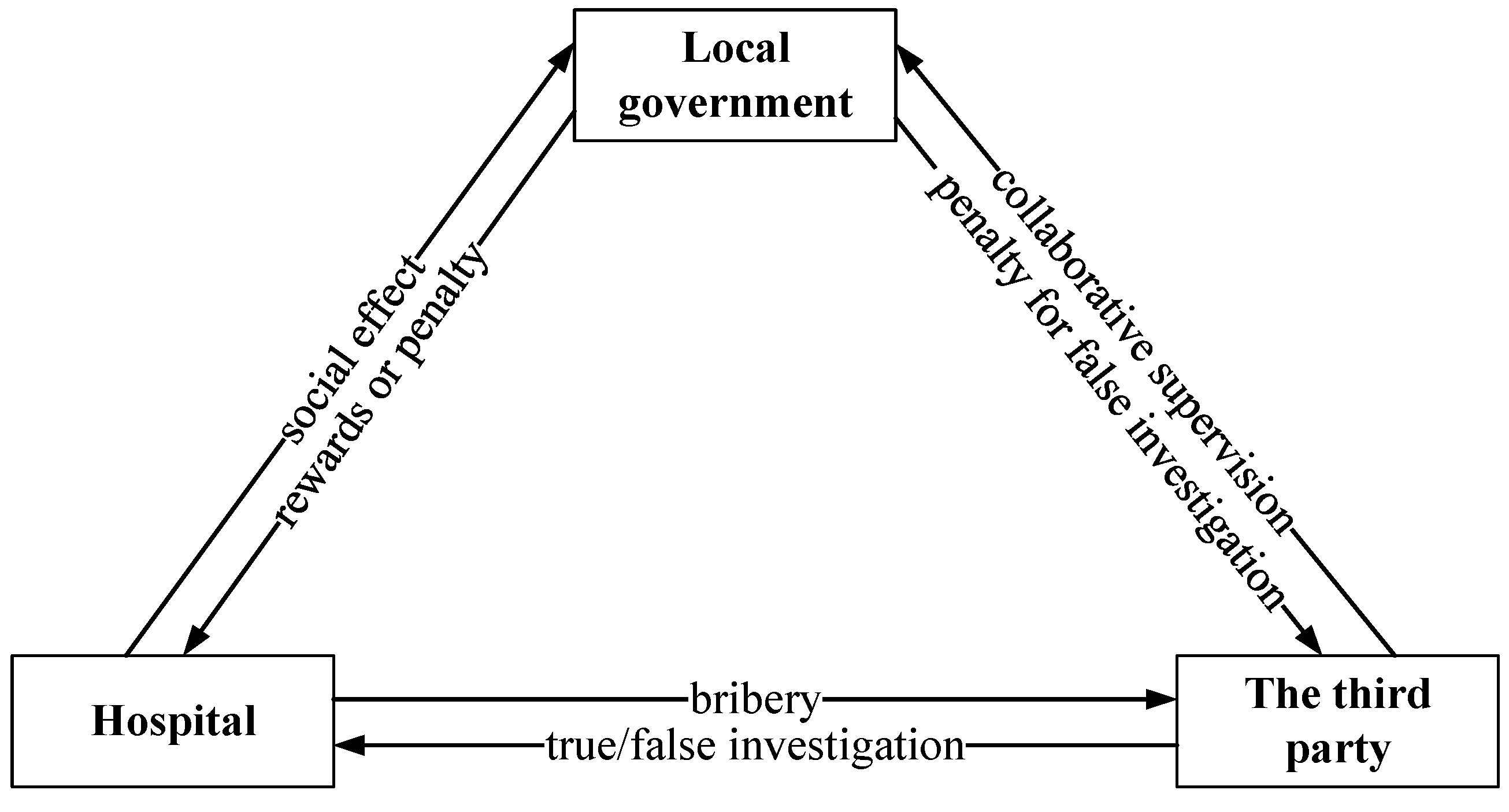

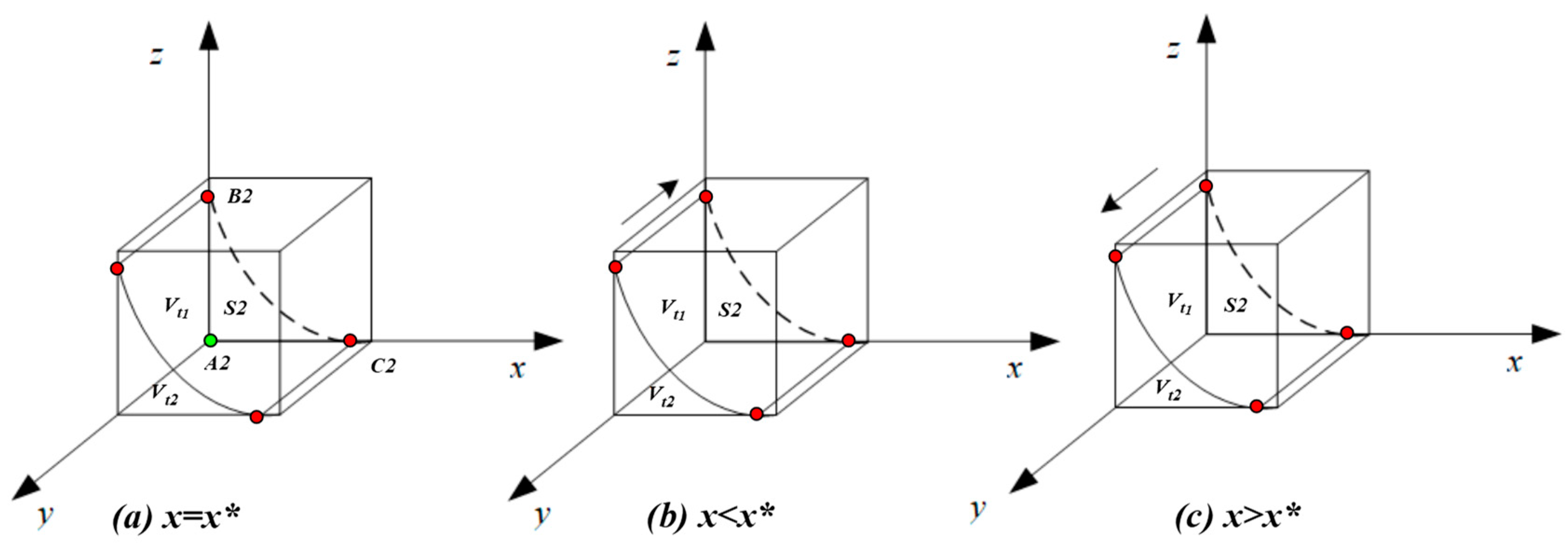

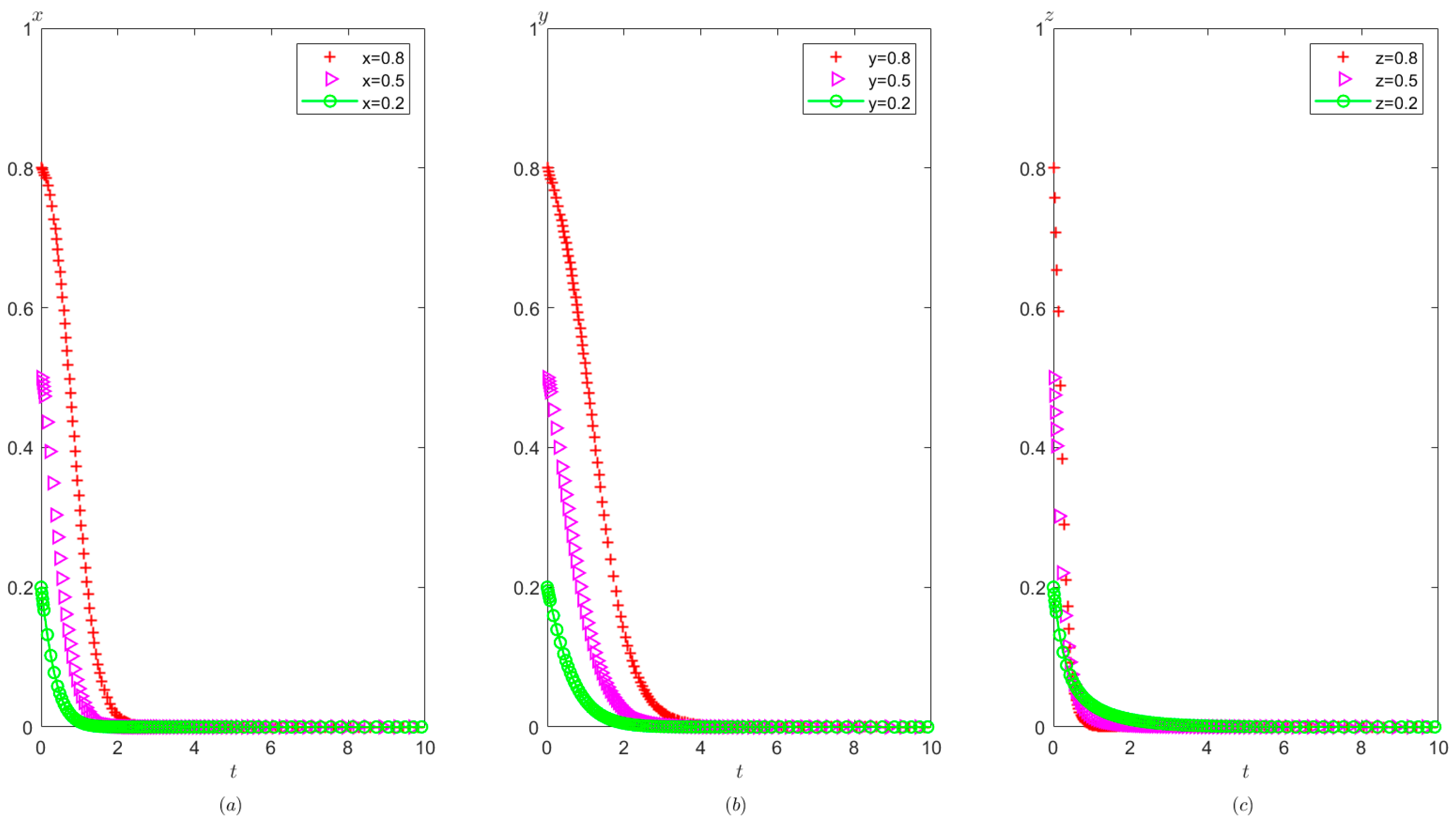

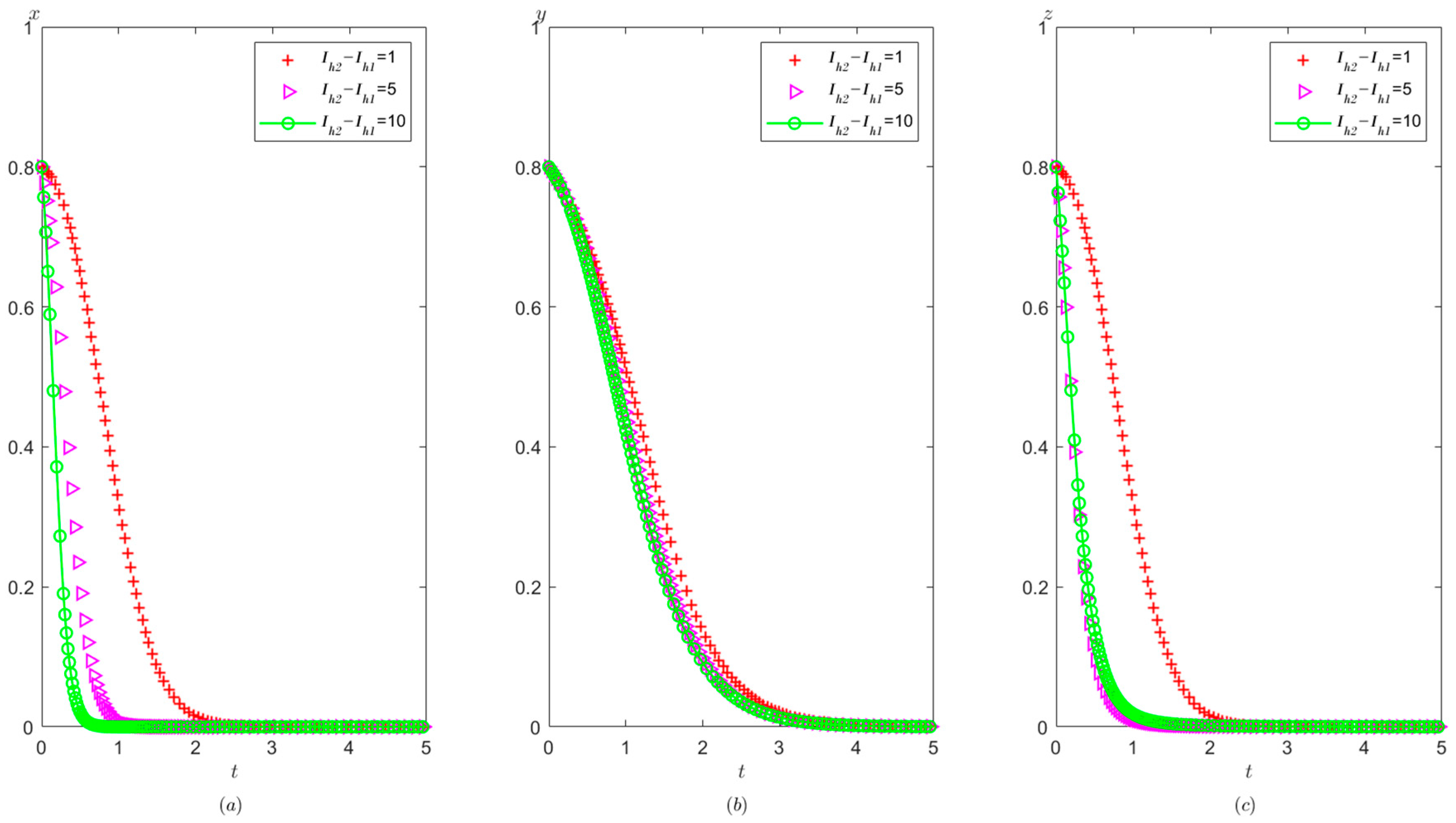
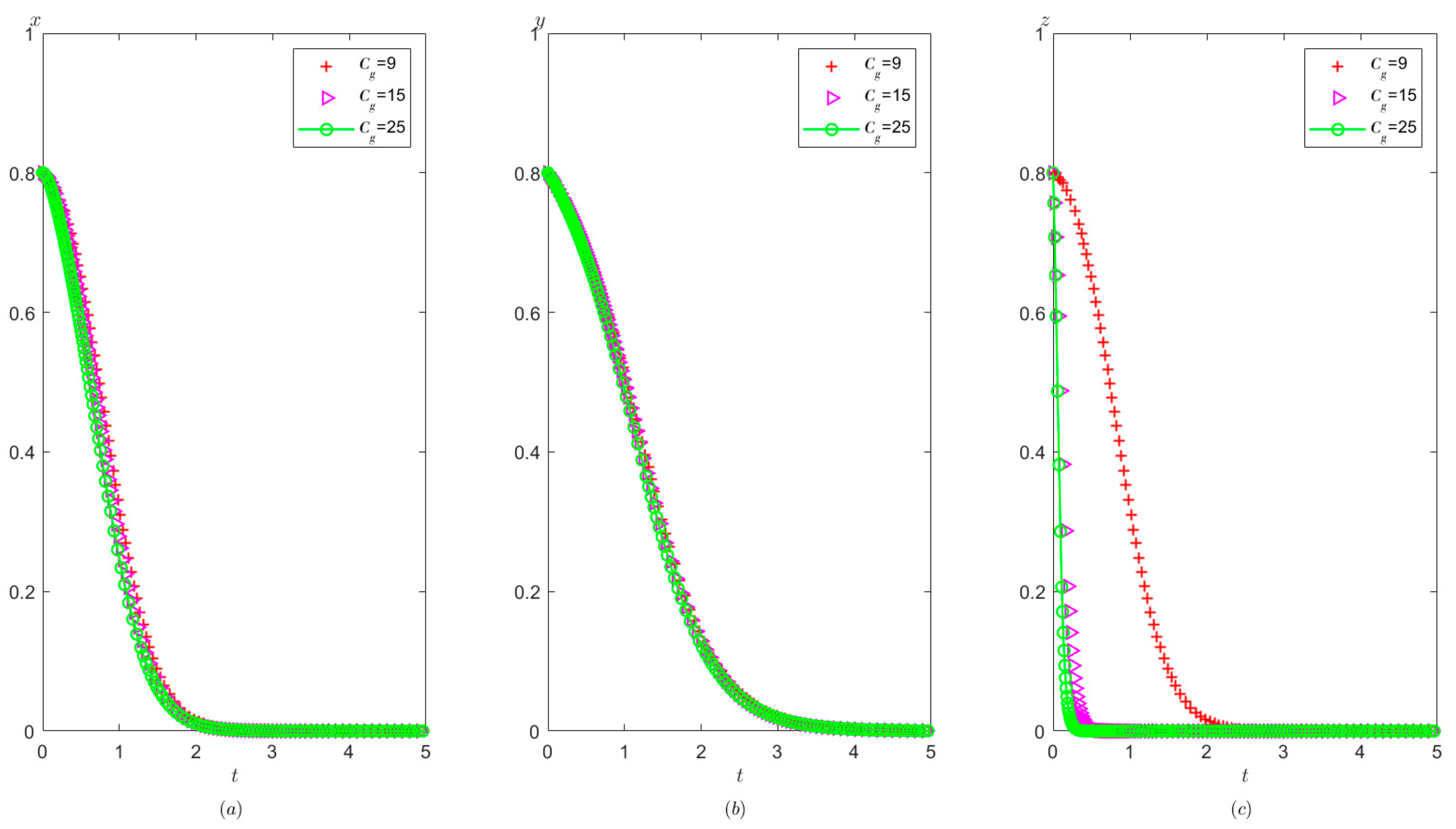

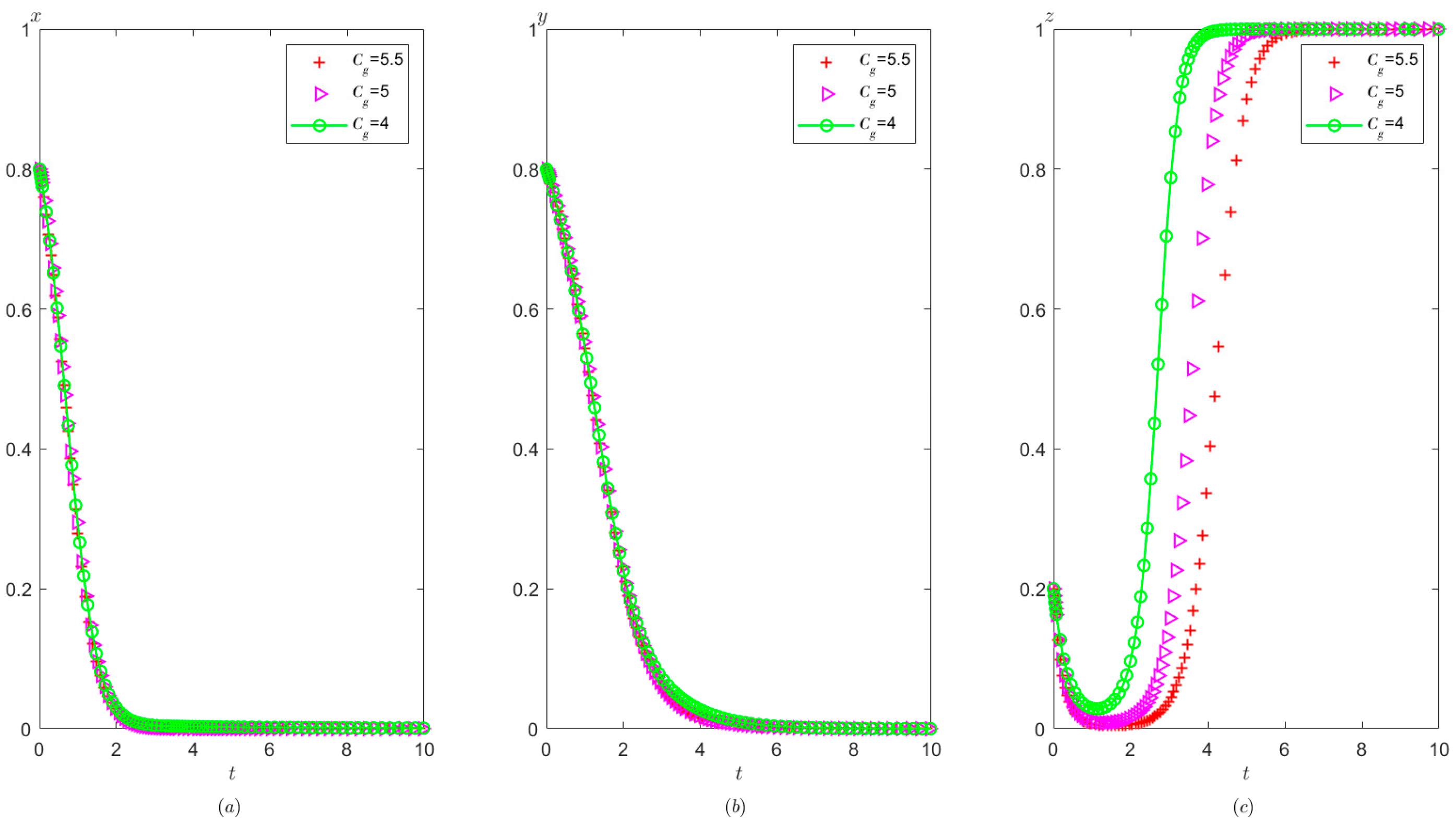
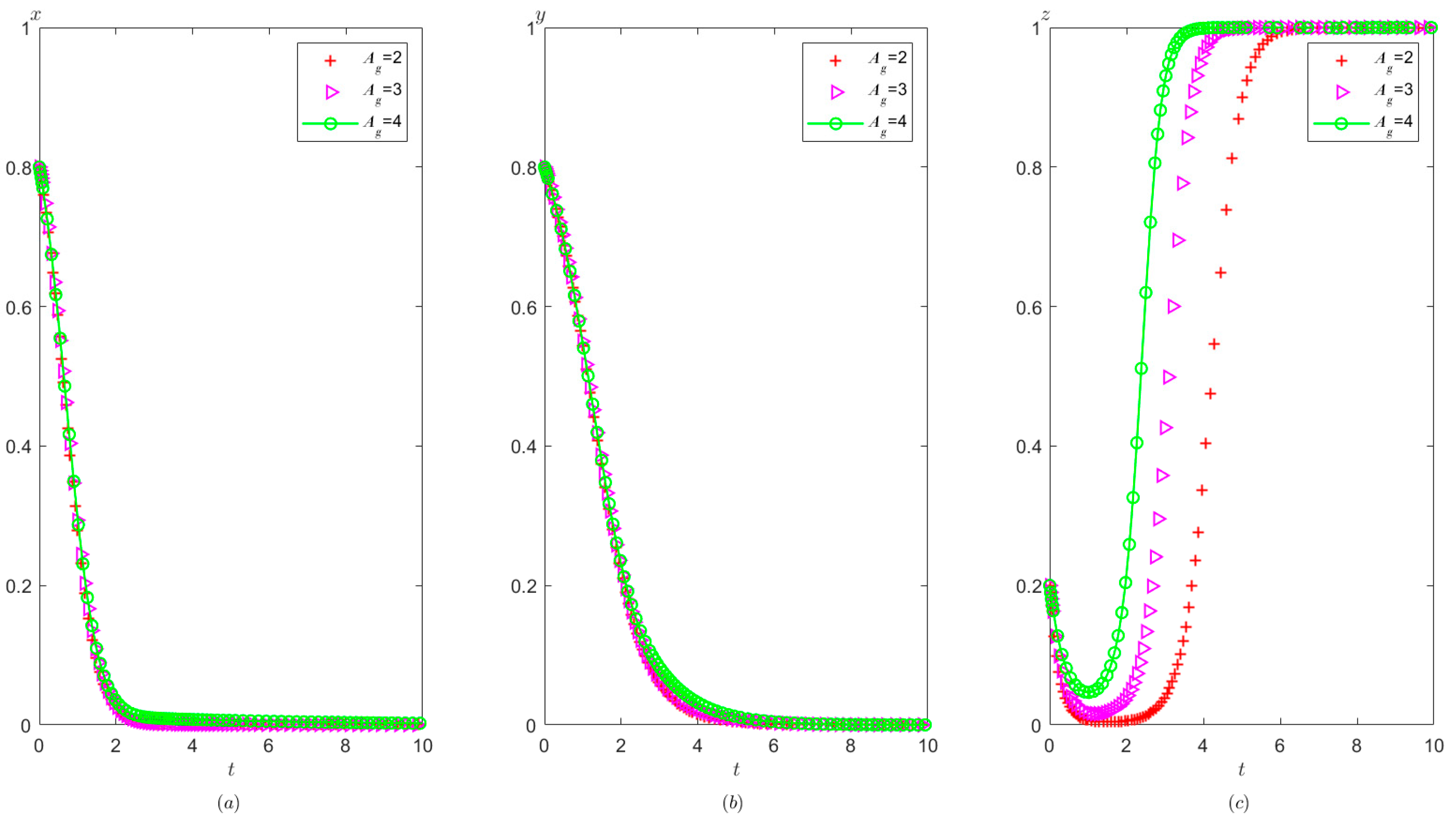
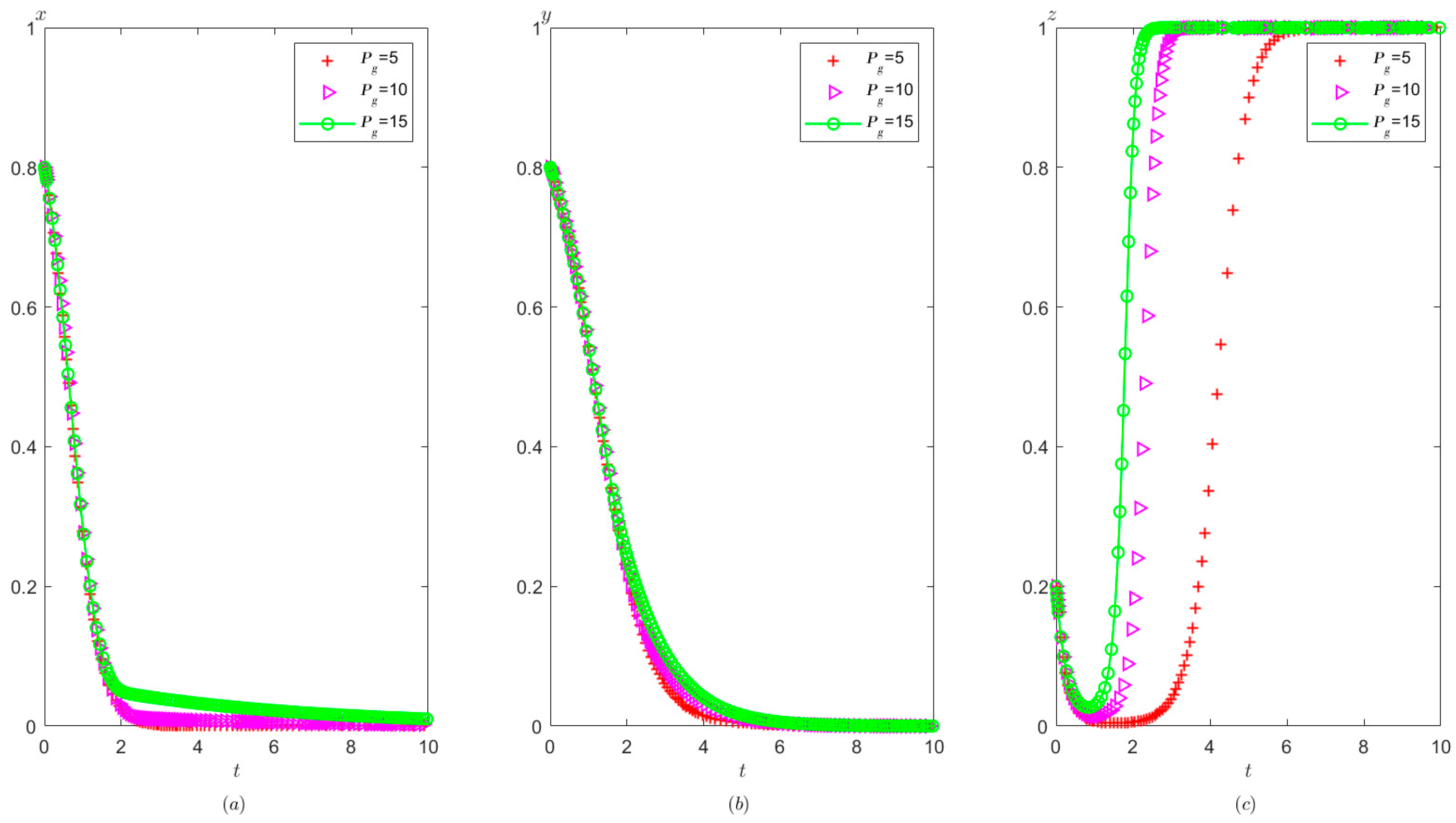
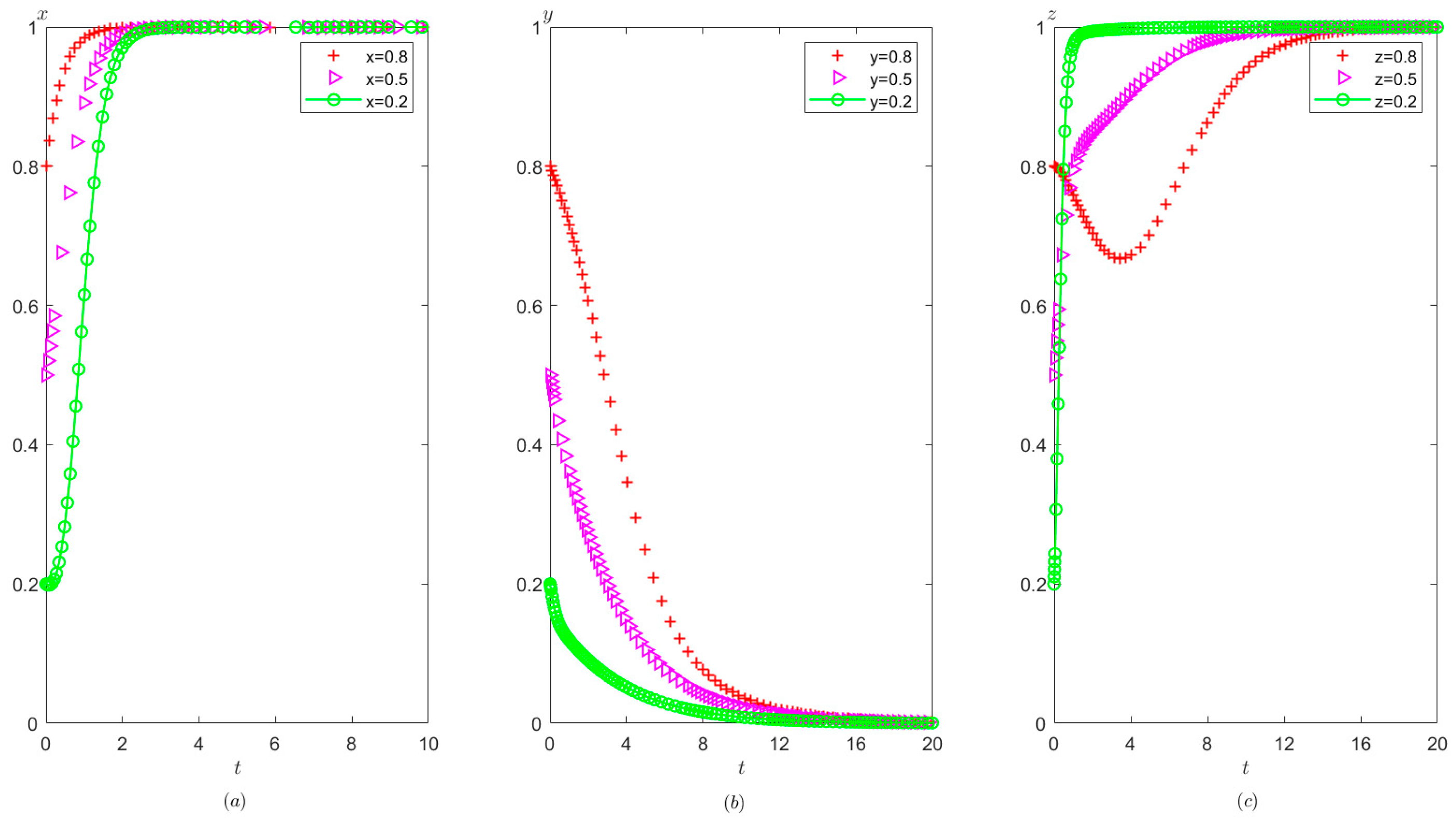

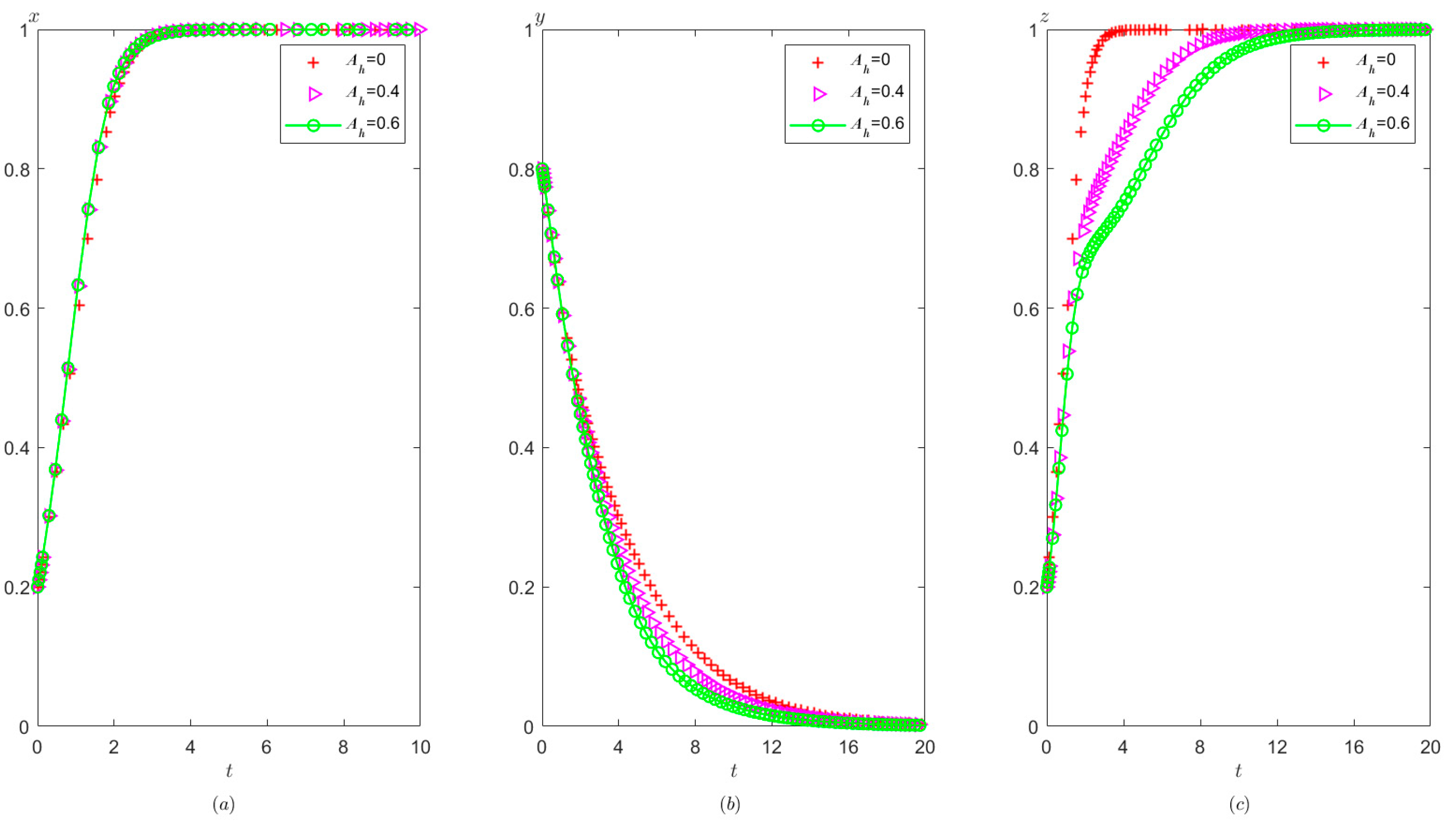
| Variables | Connotations |
|---|---|
| Cost of compliant operation of hospital | |
| Cost of illegal operation of hospital | |
| Cost of true investigation by third party | |
| Costs of false investigations by third party | |
| Cost of strict government regulation | |
| Incomes from compliant operation of hospital | |
| Incomes from illegal operation of hospital | |
| Incomes from true investigations by third party | |
| Incomes from false investigations by third party | |
| Social benefits brought to the government by compliant operation of hospital | |
| Social benefits brought to the government by illegal operation of hospital | |
| Rewards from local governments for compliant operation of hospital | |
| Fines imposed by local government on illegal operation of hospital | |
| Fines imposed by local government on false investigations by third parties | |
| Rewards from superior government for strict supervision by local government | |
| Fines imposed by the superior government on the local government for the loss of social benefits due to non-supervision |
| Third Party | Local Government | |||
|---|---|---|---|---|
| Strict Supervision | Non-Supervision | |||
| Hospital | compliant operation | true investigation | , , | , , |
| false investigation | , , | , , | ||
| illegal operation | true investigation | , , | , , | |
| false investigation | , , | , , | ||
| Equilibrium Point | Jacobian Matrix Eigenvalue () | Symbols of Three Eigenvalues | Stability Conclusion | Conditions of ESS |
|---|---|---|---|---|
| , , | ESS | A | ||
| , , | Saddle point | |||
| , , | Saddle point | |||
| , , | ESS | B | ||
| , , | Saddle point | |||
| , , | ESS | C | ||
| , , | Saddle point or unstable point | |||
| , , | Saddle point or unstable point |
Disclaimer/Publisher’s Note: The statements, opinions and data contained in all publications are solely those of the individual author(s) and contributor(s) and not of MDPI and/or the editor(s). MDPI and/or the editor(s) disclaim responsibility for any injury to people or property resulting from any ideas, methods, instructions or products referred to in the content. |
© 2023 by the authors. Licensee MDPI, Basel, Switzerland. This article is an open access article distributed under the terms and conditions of the Creative Commons Attribution (CC BY) license (https://creativecommons.org/licenses/by/4.0/).
Share and Cite
Zhu, C.; Zhou, L.; Zhang, X.; Walsh, C.A. Tripartite Evolutionary Game and Simulation Analysis of Healthcare Fraud Supervision under the Government Reward and Punishment Mechanism. Healthcare 2023, 11, 1972. https://doi.org/10.3390/healthcare11131972
Zhu C, Zhou L, Zhang X, Walsh CA. Tripartite Evolutionary Game and Simulation Analysis of Healthcare Fraud Supervision under the Government Reward and Punishment Mechanism. Healthcare. 2023; 11(13):1972. https://doi.org/10.3390/healthcare11131972
Chicago/Turabian StyleZhu, Change, Lulin Zhou, Xinjie Zhang, and Christine A. Walsh. 2023. "Tripartite Evolutionary Game and Simulation Analysis of Healthcare Fraud Supervision under the Government Reward and Punishment Mechanism" Healthcare 11, no. 13: 1972. https://doi.org/10.3390/healthcare11131972
APA StyleZhu, C., Zhou, L., Zhang, X., & Walsh, C. A. (2023). Tripartite Evolutionary Game and Simulation Analysis of Healthcare Fraud Supervision under the Government Reward and Punishment Mechanism. Healthcare, 11(13), 1972. https://doi.org/10.3390/healthcare11131972





